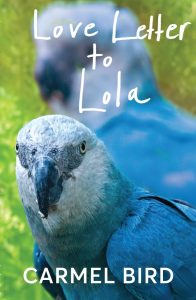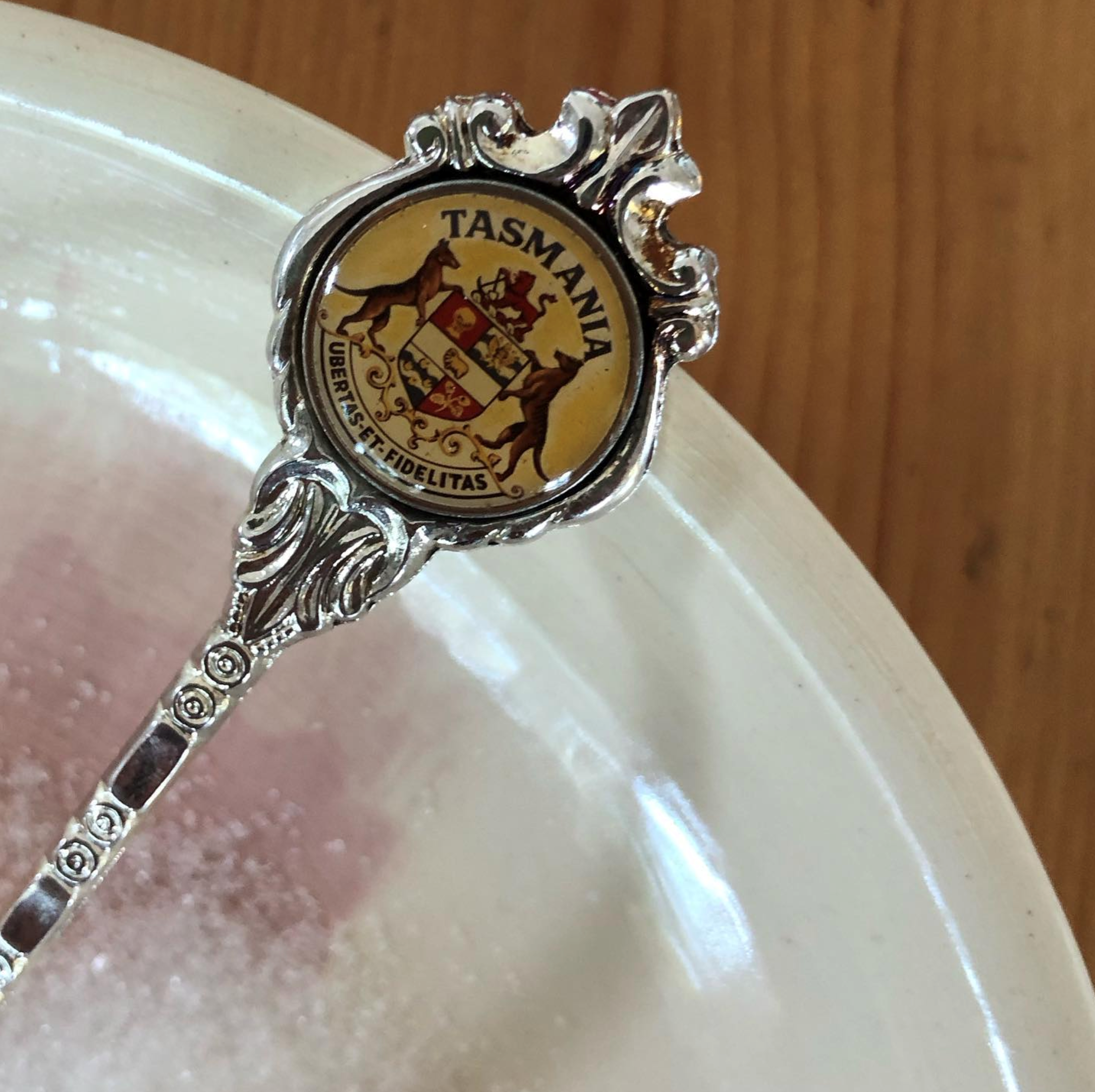To mark the release of Love Letter to Lola, we present a short extract from ‘Reflections’, an exegesis on the writing of this collection by Carmel Bird. Also included below are notes from the author about the choice of front and back cover images. The book is released today, May 1, 2023 and is available from bookseller and from this website.
 About the cover:
About the cover:
Extinction of species is a topic that broods across several of the stories in the collection.
The title story is a letter written by the last Spix’s macaw to his dead wife, expressing his grief. The brilliant designer Bettina Kaiser used for the front cover a picture of the bird as he stares directly into the eye of the beholder, with the blurred ghostly image of his love hovering in the background.
Another story tells the tale of the thylacine. In 1917 Tasmania adopted a coat of arms on which appeared the image of two thylacines. But nineteen years later the last thylacine in the world died in the Hobart zoo, having been hunted to extinction. Here is an official quote from a current Tasmanian government document:
“The coat of arms is rarely seen nowadays, except on official government publications or in government buildings. It has been replaced for the most part by the new government logo of a Tasmanian tiger peeking through tall grass.” Such is progress?
On the back cover of the book, I wanted to include an image of the coat of arms as a tragic and ironic comment. Bettina and I realised that this could be legally problematic, even though the coat of arms is widely used on tea towels and T-shirts and coffee mugs. So Bettina (I said she was brilliant) sourced a souvenir teaspoon imprinted with the image. She bought it from a dealer in Tasmania, and – hey presto! – there it is lying sweetly and prettily on the back cover of Love Letter to Lola.
Note: The thylacine and Spix’s macaw are now both part of programs which aim to bring their species back from extinction.
From ‘Reflections’, Love Letter to Lola, Carmel Bird (Spineless Wonders, 2023):
‘The stories in this, my eighth collection, frequently contain references, however slight, to earlier work, and there is a perpetual sub-terranean or sub-marine hum that sets up between and across my books. I have found my fiction overall to be a personal expression of my search for meaning in existence. There are many ways to go about such a search, but telling stories has always provided one of the clearest paths for human beings to follow.
I was born at the beginning of the Second World War, and soon experienced the ever-present fear of an earthly nuclear holocaust that would wipe out everything. Of course, today the planet and all the life upon it are even more clearly endangered, one way and another. The consciousness of all this naturally informs my fiction. In the ‘Animals’ section of this collection there are six stories that address the question of the extinction of species. And three of the stories in ‘Humans and Angels’ are concerned with the end of time.
Stories generally deliver to a reader a particular writer’s perspective on the complexities of being alive. They are the refinement and elaboration and articulation of the results of that writer’s observation and curiosity. The focus may be vast, broad, or fine and narrow. Tragic or comic, peaceful or violent. There remains for the writer to discover the language, the tone, the mood, and the structure that will best express the ideas, and will best interest and engage and entertain and move a reader. It is a writer’s job to do all those things. The ideal reader is the one who gets it. Which, I suppose, makes the ideal writer the one who gives it.
Yes, I sometimes indulge in these little homilies. I think it is in order to remind myself of what I think I am doing. I find it helps. In reflecting on the stories in Love Letter to Lola, where to begin?’
What writers are saying about Love Letter to Lola:
‘Playful, violent, wild, these stories ask us to inhabit the bodies and minds of other species as they – as we all – stand tremulous on the point of extinction.’
Sophie Cunningham
‘This teeming collection is deeply tuned to the possibilities of a future ‘where all life on the planet is treasured and nurtured by humans’.’
Gregory Day
‘Clever, heartfelt, joyous, and wise. Time spent with Carmel Bird is simply uplifting.’
Michael McGirr
‘Immersive, surprising, and irresistible. A beguiling blend of historical facts and
a dazzling imagination. Profound emotion and disarming wit.’
Susan Midalia
‘Carmel Bird weaves her magic. Hers is a unique voice, attuned to the disquiets of our age, and still able to inspire hope and reflection.’
Dennis Altman
‘… rich, unnerving, playful, terrifying, and heartbreakingly moving.’
Matthew Condon

About the Author:
Carmel Bird won the Patrick White Award for Literature in 2016. She has published novels, short stories, and non-fiction, her 2022 memoir Telltale foregrounding her Tasmanian origins, as well as her lifelong interest in the natural world, and in reading and writing. The Stolen Children – Their Stories, which she published in 1998, is an early landmark work in the promotion of indigenous issues. Love Letter to Lola is the latest offering of an author who is known for the sharpness and originality of her narratives.

